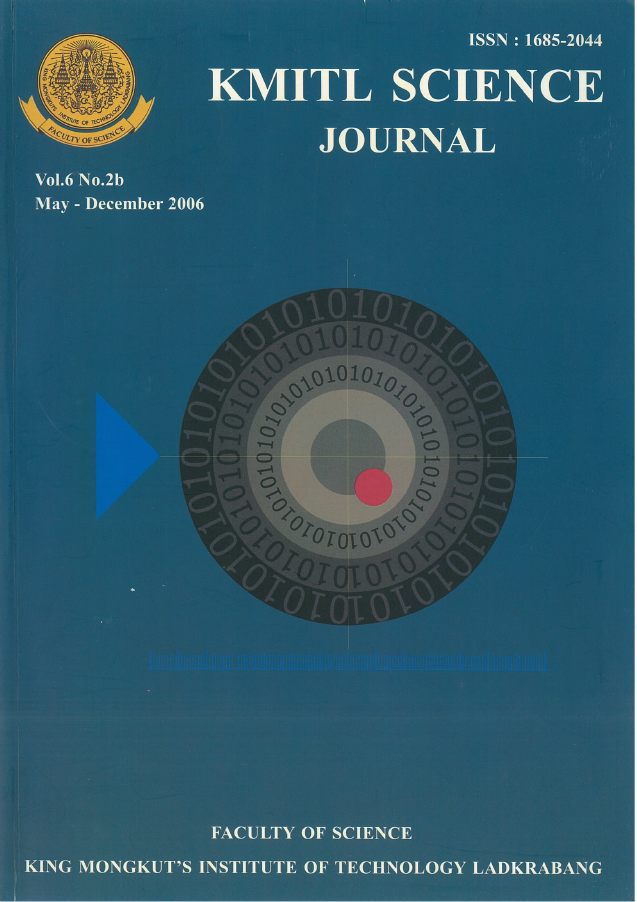Effect of Lactic Acid Bacteria and Some Bacterial Contaminant on Non-Sterile Yeast Cell Production
Main Article Content
Abstract
Lactobacillus plantarum LF2, previously isolated from sugarcane juice, was used to assess its potential to reduce and prevent bacterial contamination in non-sterile yeast cell production using sugarcane based medium. The results showed that LF2 and Saccharomyces cerevisiae M30 coexisted, and that the maximum specific growth rate of the yeast was not affected by the presence of LF2, neither in sterile nor non-sterile batch cultures. The yeast specific growth rate was also not affected by the deliberate addition of gram-negative aerobic bacterial culture at the level of 107 CFU.ml-1 at the start of batch culture. However, compared to the pure yeast culture, the maximal cell dry weight decreased in all mixed cultures. During batch culture, growth of the bacterial contaminant was suppressed either when the pH fell below 4.0 or in the presence of LF2. During the prolonged growth phase of cyclic-fed batch culture (CFBC), the number of yeast M30 and LF2 remained coexistent. However, the bacterial contaminant exhibited growth competition during CFBC, resulting in a rapid increase in the cell number from approx. 105 to 108 CFU.ml-1 over the period of 24 hours while the number of LF2 tended to decrease slightly.
Keywords: Lactic acid bacteria, yeast, fermentation, contamination
Corresponding author: E-mail: kcsasivi@kmitl.ac.th
Article Details
Copyright Transfer Statement
The copyright of this article is transferred to Current Applied Science and Technology journal with effect if and when the article is accepted for publication. The copyright transfer covers the exclusive right to reproduce and distribute the article, including reprints, translations, photographic reproductions, electronic form (offline, online) or any other reproductions of similar nature.
The author warrants that this contribution is original and that he/she has full power to make this grant. The author signs for and accepts responsibility for releasing this material on behalf of any and all co-authors.
Here is the link for download: Copyright transfer form.pdf
References
[2] Fuller, R. 1989 Probiotics in Man and Animals. Journal of Applied Bacteriology, 66, 365-378.
[3] Reed, G. and Nagodawithana, T.W. 1991. Yeast technology. 2 nd Edition, New York, AVI.
[4] Navarro, L., Zarazaga, M., Saenz, J., Ruiz-Larrea, F. and Torres, C. 2000. Bacteriocin Production by Lactic Acid Bacteria Isolated from Rioja Red Wines. Journal of Applied Microbiology, 88, 44-51.
[5] Somogyi, M. 1952 Journal of Biological Chemistry, 195, 19-23.
[6] Makanjuola, D.B., Tymon, A. and Springham, D.G. 1992. Some Effects of Lactic Acid Bacteria on Laboratory-Scale Yeast Fermentations. Enzyme and Microbial Technology, 14, 350-357.
[7] Domingues, L., Lima, N. and Teixeira, J.A. 2000. Contamination of High Cell Density Bioreactors, Biotechnology and Bioengineering, 68, 584-587.


